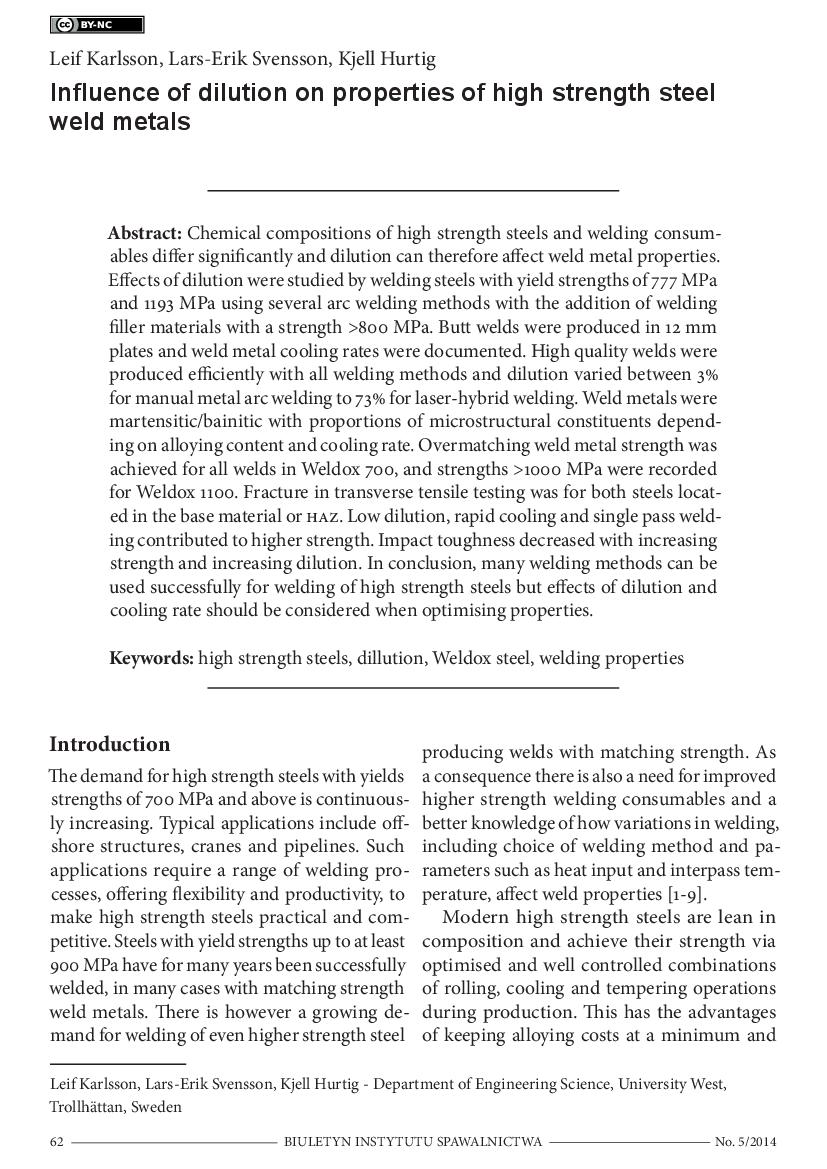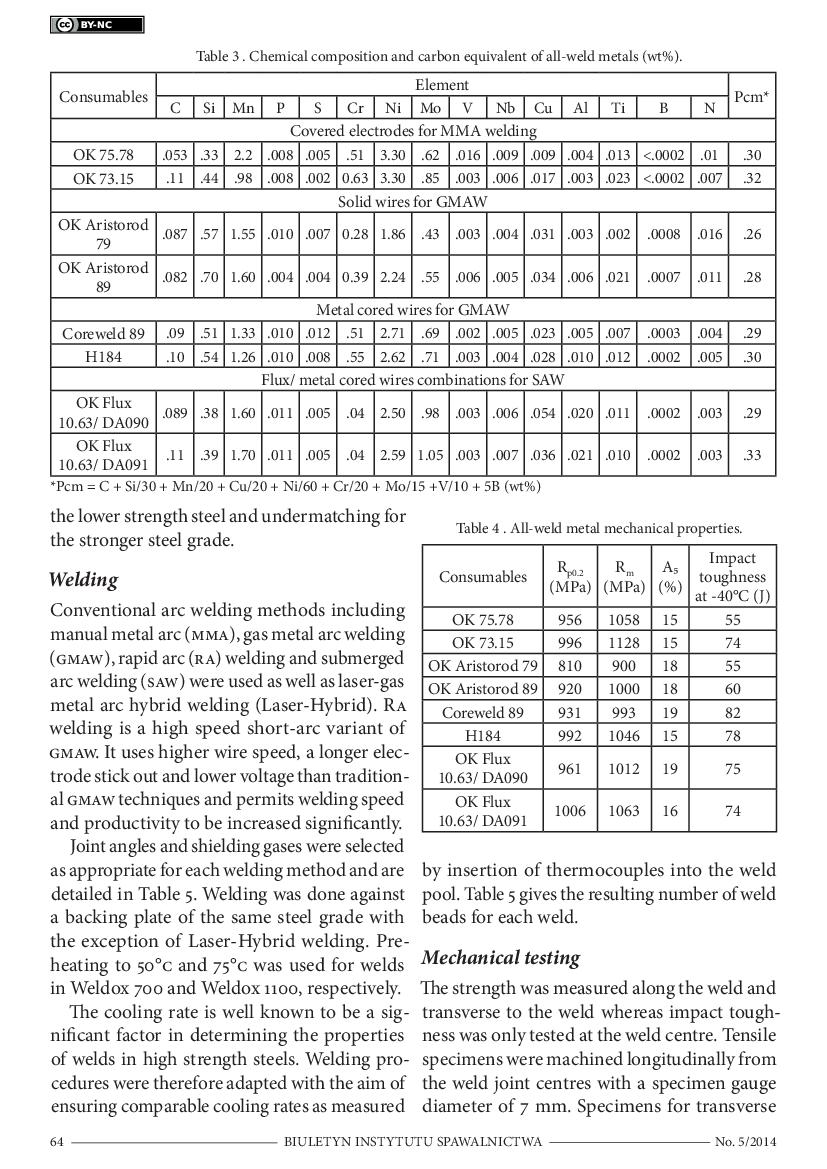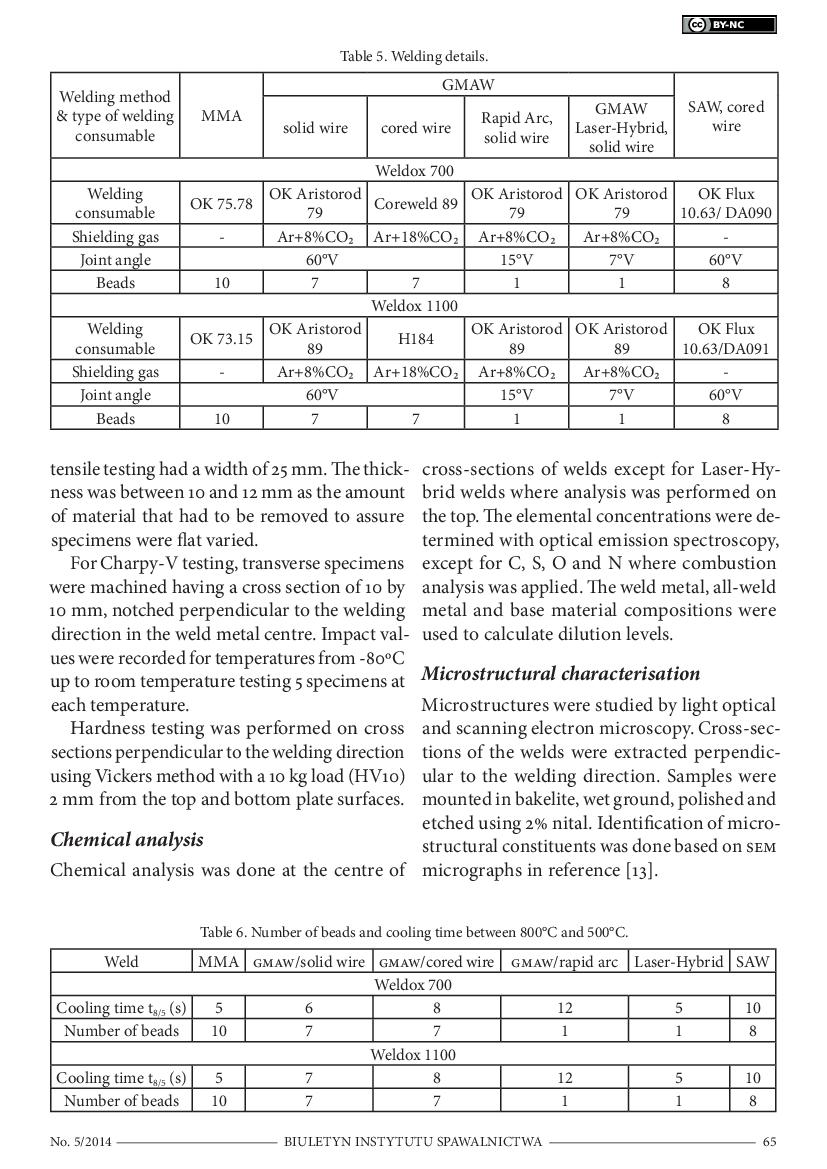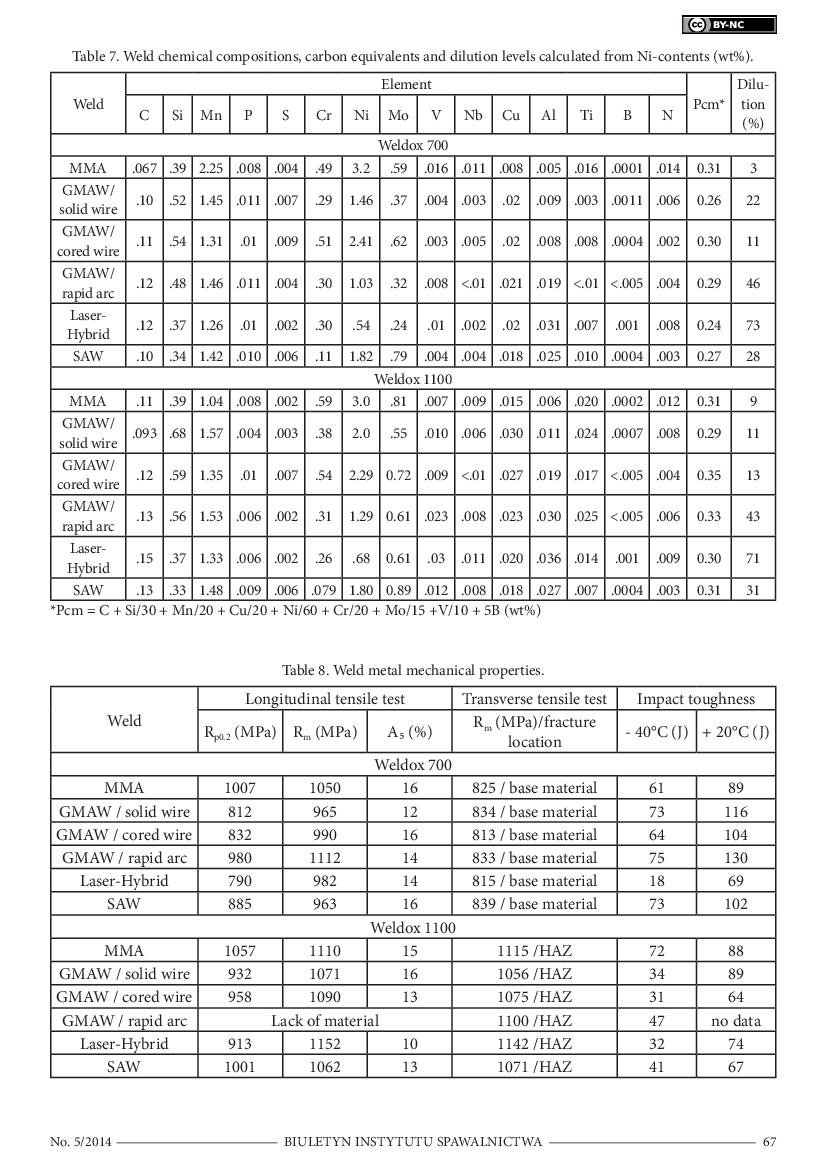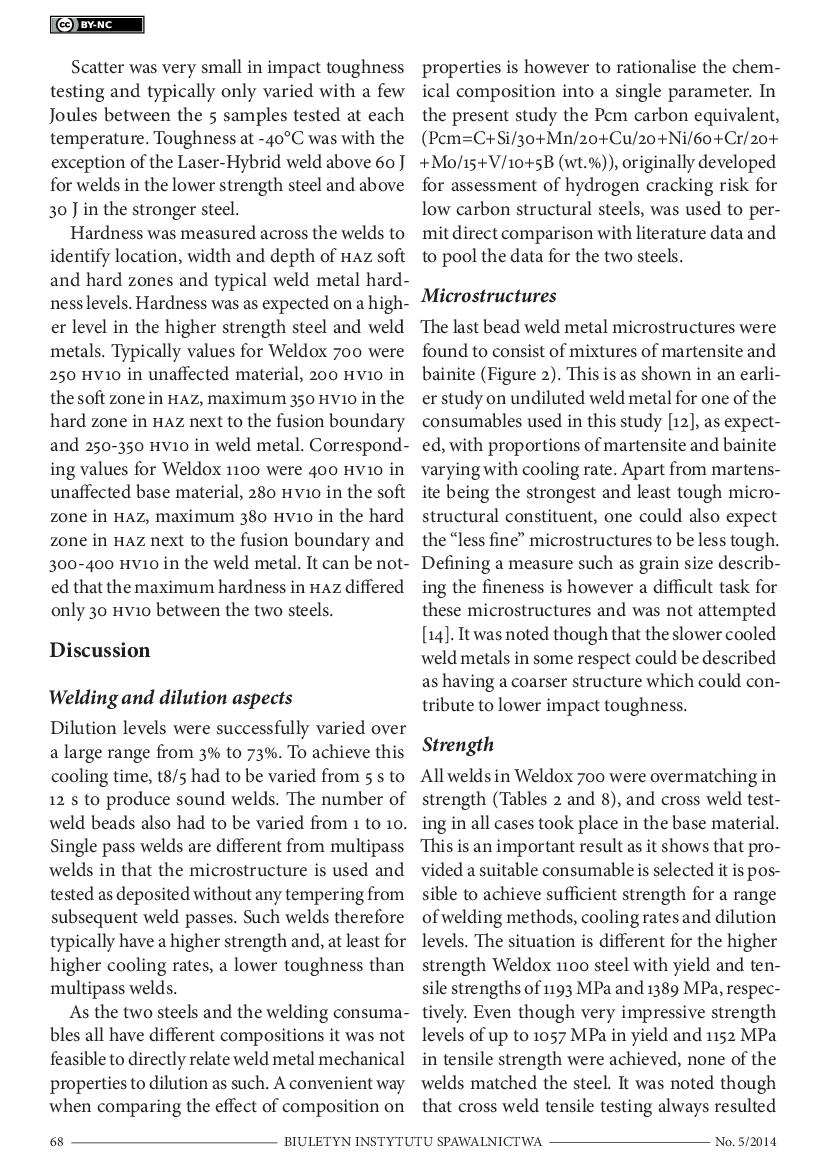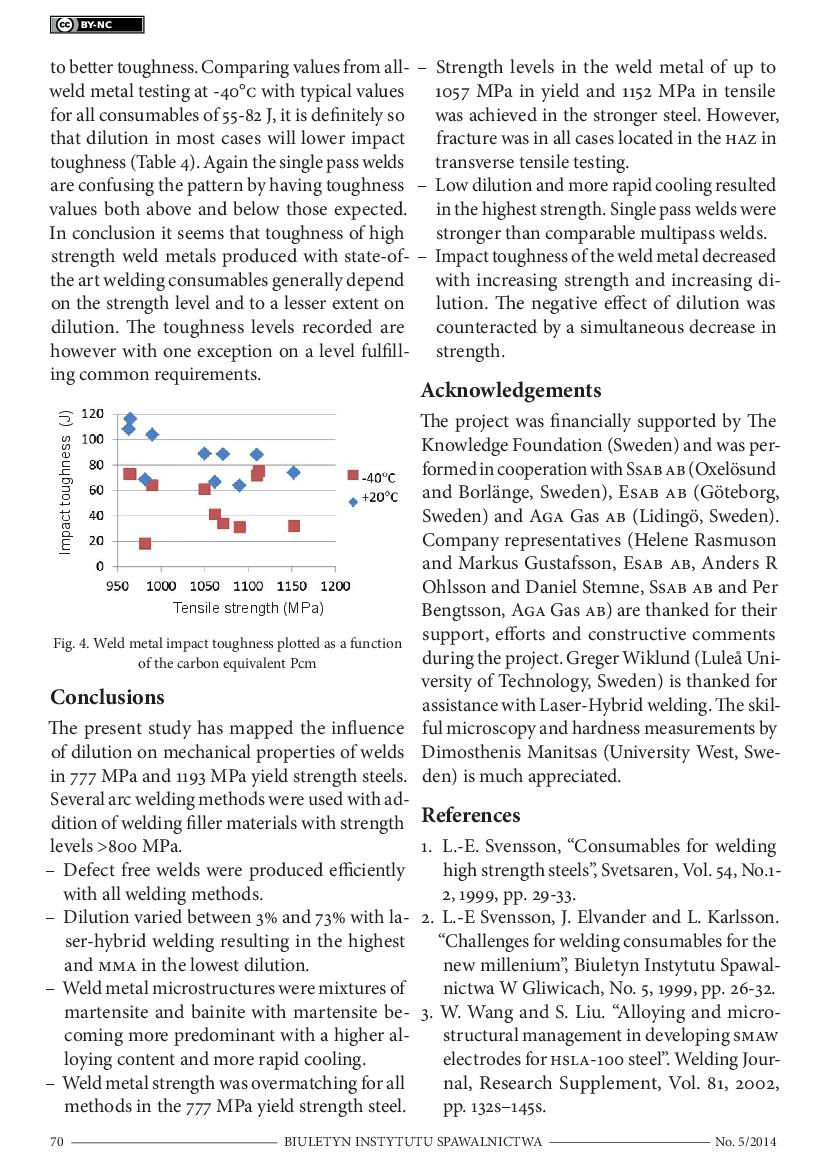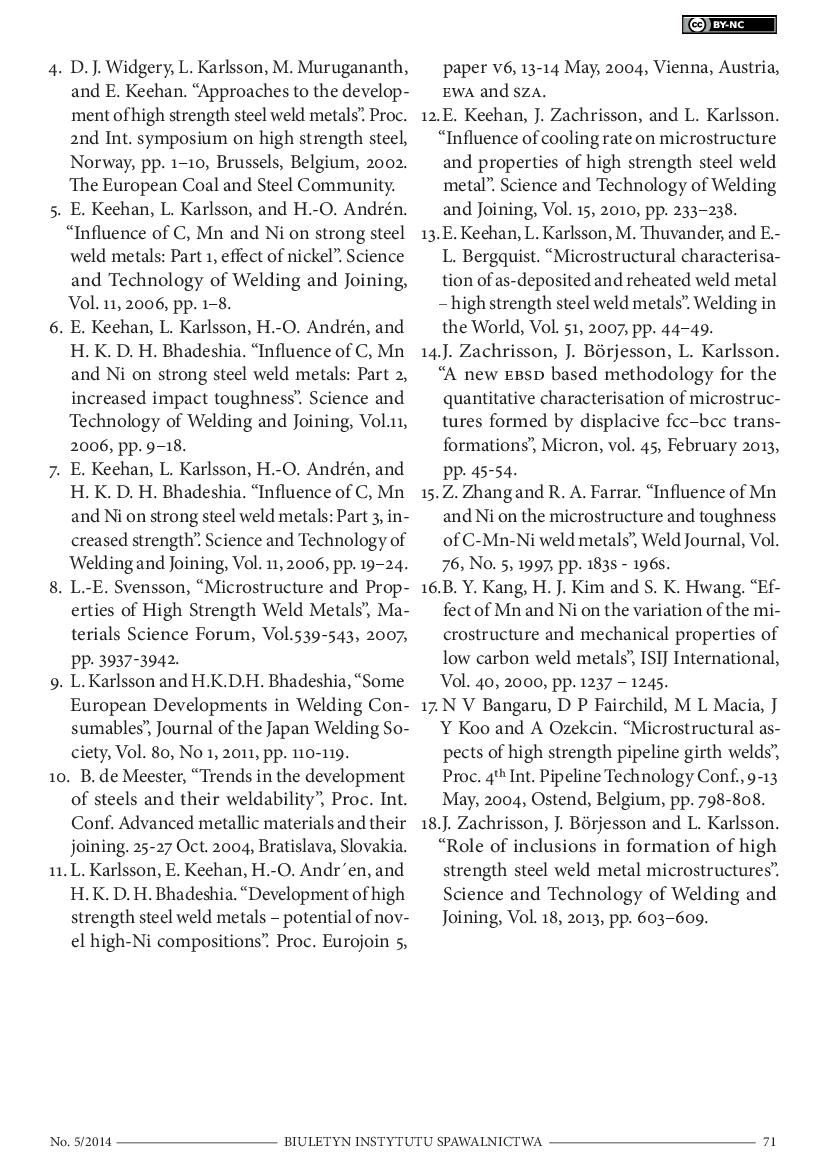Influence of dilution on properties of high strength steel weld metals
Chemical compositions of high strength steels and welding consumables differ significantly and dilution can therefore affect weld metal properties. Effects of dilution were studied by welding steels with yield strengths of 777 MPa and 1193 MPa using several arc welding methods with the addition of welding filler materials with a strength >800 MPa. Butt welds were produced in 12 mm plates and weld metal cooling rates were documented. High quality welds were produced efficiently with all welding methods and dilution varied between 3% for manual metal arc welding to 73% for laser-hybrid welding. Weld metals were martensitic/bainitic with proportions of microstructural constituents depending on alloying content and cooling rate. Overmatching weld metal strength was achieved for all welds in Weldox 700, and strengths >1000 MPa were recorded for Weldox 1100. Fracture in transverse tensile testing was for both steels located in the base material or HAZ. Low dilution, rapid cooling and single pass welding contributed to higher strength. Impact toughness decreased with increasing strength and increasing dilution. In conclusion, many welding methods can be used successfully for welding of high strength steels but effects of dilution and cooling rate should be considered when optimising properties.
 1 / 10
1 / 10
 2 & 3 / 10
2 & 3 / 10
 4 & 5 / 10
4 & 5 / 10
 6 & 7 / 10
6 & 7 / 10
 8 & 9 / 10
8 & 9 / 10 10 / 10
10 / 10


